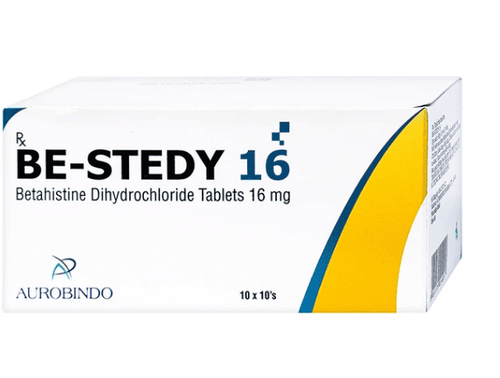This is an automatically translated article.
Cadivastal is a drug commonly prescribed in the treatment of angina, chest pain caused by decreased oxygen and blood flow to the heart. Besides, in some cases, Cadivastal also helps to overcome tinnitus and dizziness effectively. Please refer to the article below, you will know more necessary information about this drug.
1. What is Cadivastal?
Cadivastal medicine contains the active ingredient Trimetazidine dihydrochloride 20 mg. The mechanism of action of Trimetazidin is to control the beta-oxidation of fatty acids by inhibiting the long-chain 3-ketoacyl-CoA thiolase enzymes. For ischemic cells, the energy obtained in glucose oxidation requires oxygen consumption usually to a lesser extent than in beta-oxidation. At this time, the promotion of glucose oxidation will contribute to the optimization of cellular energy processes to maintain proper energy metabolism during anemia.
For patients with ischemic heart disease, Cadivastal acts as a metabolite that confers the ability to preserve intracellular high energy phosphate levels in cardiomyocytes. Although Cadivastal helps anti-ischemic effects, it does not affect hemodynamics.
2. Indications and contraindications
2.1. Indications Used in the treatment and prevention of angina pectoris, chest pain caused by decreased oxygen supply and decreased blood flow to the heart. Cadivastal helps repair damage to blood vessels in the retina. Support in the treatment of vasomotor vertigo, Ménière's syndrome and tinnitus. 2.2. Contraindications Do not use Cadivastal for patients with hypersensitivity to the components of the drug, people with heart failure, heart failure.
3. Dosage and usage
Use Cadivastal at the beginning of meals with reference doses as follows:
Treatment of diseases related to eyes and ears: Use the drug at a dose of 40mg - 60mg/day, divided into 2-3 oral doses. Treatment of coronary heart disease, angina pectoris: Initial use is 20mg x 3 times/day, then it can be reduced to 20mg x 2 times/day.
4. Side effects
The use of Cadivastal always makes many patients worry about side effects. However, do not worry too much because common problems will probably disappear after a few days. If the following signs appear, you need to contact a doctor to get help:
Headache, nausea, vomiting, persistent vomiting. Abdominal pain, diarrhea, feeling tired and dizzy especially when moving. Allergies, rashes, hives on the skin in many places. Arrhythmia, tachycardia, palpitations, orthostatic hypotension or arterial hypotension.
5. Drug interactions
Cadivastal can be used in combination with some other drugs in the treatment of angina. However, patients should not arbitrarily combine or use caution when using to avoid drug interactions. Besides, you also need to inform your doctor about the specific herbs, vitamins or drugs you are using to avoid unfortunate cases.
6. Use Cadivastal with caution
Cadivastal may lead to or worsen Parkinson's symptoms in the elderly. Therefore, this subject should be monitored regularly when taking the drug, especially when there are symptoms of restless legs syndrome, tremor, unsteady gait... Care should be taken when prescribing Cadivastal to patients with renal failure. average level. Use Cadivastal in accordance with the recommended dosage to achieve the desired treatment results, do not forget or overdose, when experiencing unusual symptoms, stop using the drug and seek medical help. . Above is all information about Cadivastal drug, patients need to carefully read the instructions for use, consult a doctor / pharmacist before using. Note, Cadivastal is a prescription drug, patients absolutely must not buy drugs to treat at home because they may encounter unwanted side effects.













